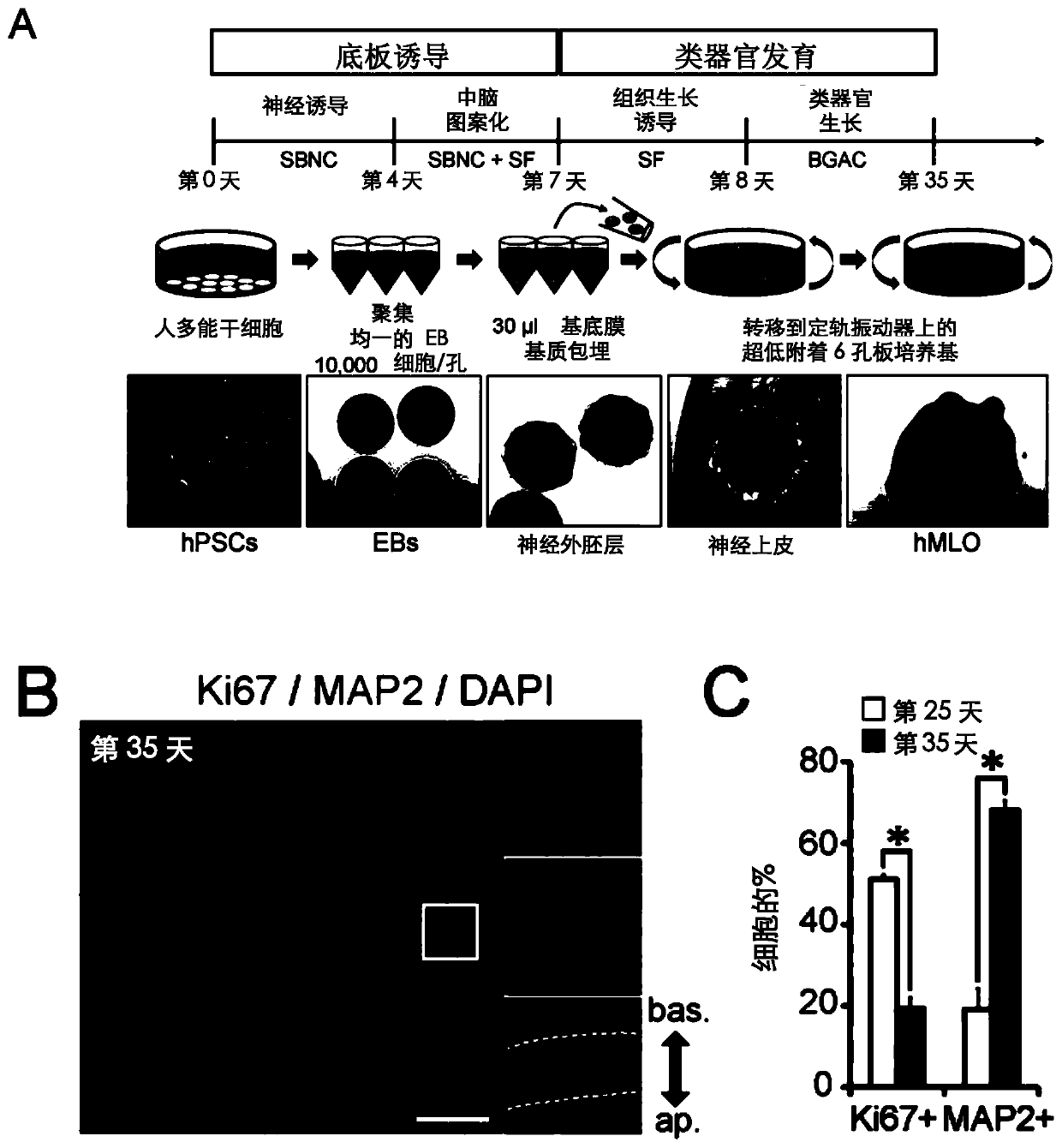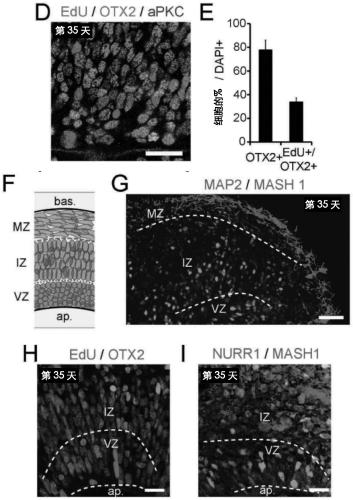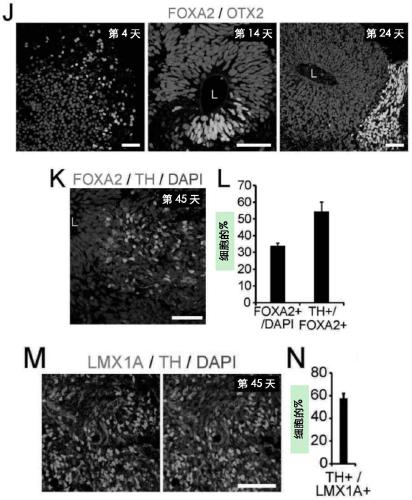Generation of midbrain-specific organoids from human pluripotent stem cells
An organoid and cell technology, applied in the field of organoid generation, which can solve problems such as unclear 3D organoid models
- Summary
- Abstract
- Description
- Claims
- Application Information
AI Technical Summary
Problems solved by technology
Method used
Image
Examples
Embodiment Construction
[0037] Organoids are cellular structures that mimic the organization and function of organs. In contrast to single-cell cultures, organoids consist of multiple cell types that are spatially organized. The present disclosure demonstrates that 3D culture conditions allow cells of organoids to unravel the self-organizing capacity of multiple cell types, which enhances better survival and maturation of specific cell types by creating an appropriate niche environment. Accordingly, the present disclosure describes methods for generating organoids capable of recapitulating midbrain characteristics by differentiating human embryonic stem cells into midbrain-like organoids.
[0038] Efficient differentiation of pluripotent stem cells (PSCs) into most homogeneous cell types, such as neurons, can be directed. These in vitro generated neurons enable downstream research and potential therapeutic applications. Recent advances in three-dimensional (3D) culture systems have led to the gener...
PUM
 Login to View More
Login to View More Abstract
Description
Claims
Application Information
 Login to View More
Login to View More - R&D
- Intellectual Property
- Life Sciences
- Materials
- Tech Scout
- Unparalleled Data Quality
- Higher Quality Content
- 60% Fewer Hallucinations
Browse by: Latest US Patents, China's latest patents, Technical Efficacy Thesaurus, Application Domain, Technology Topic, Popular Technical Reports.
© 2025 PatSnap. All rights reserved.Legal|Privacy policy|Modern Slavery Act Transparency Statement|Sitemap|About US| Contact US: help@patsnap.com



